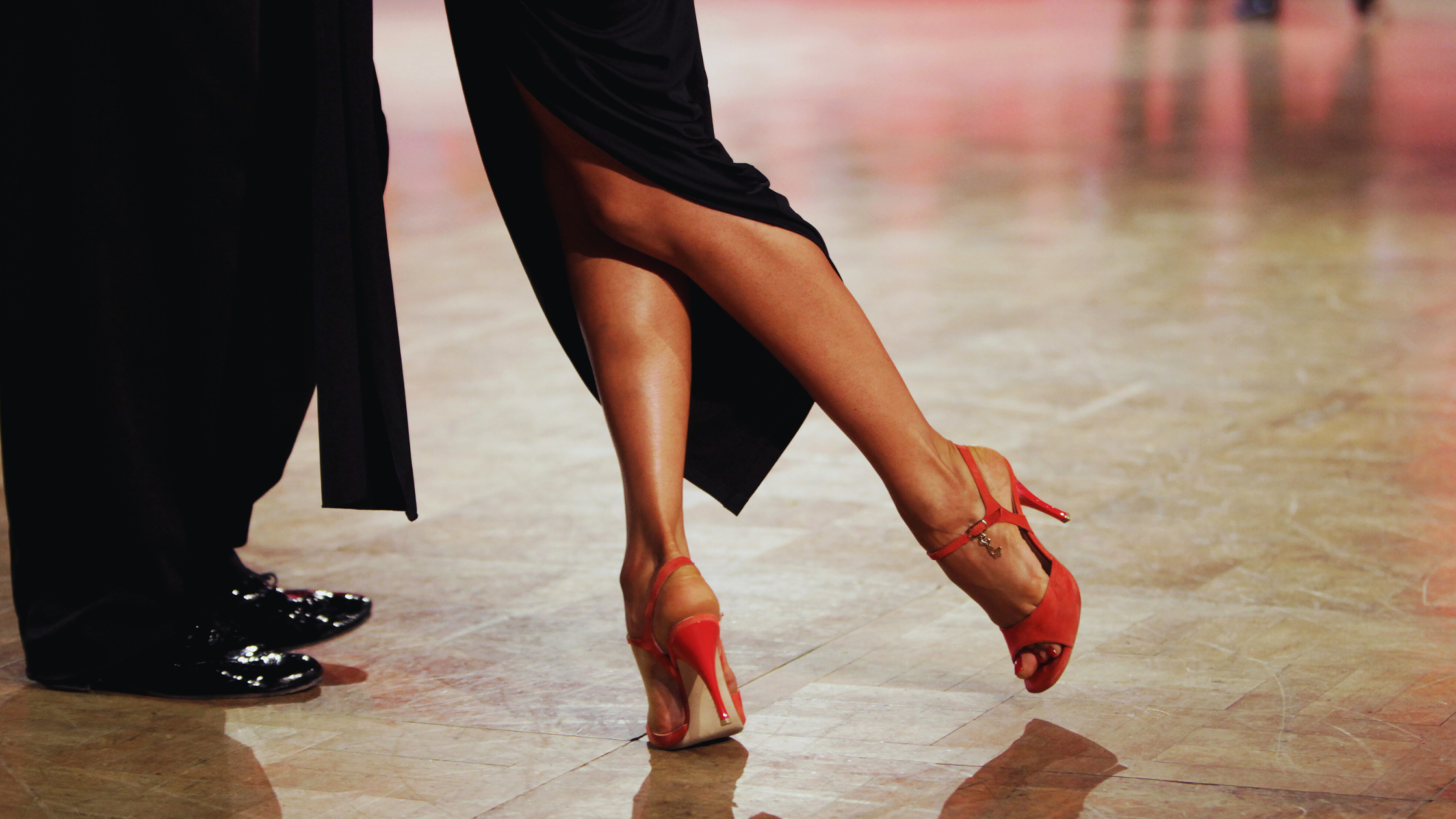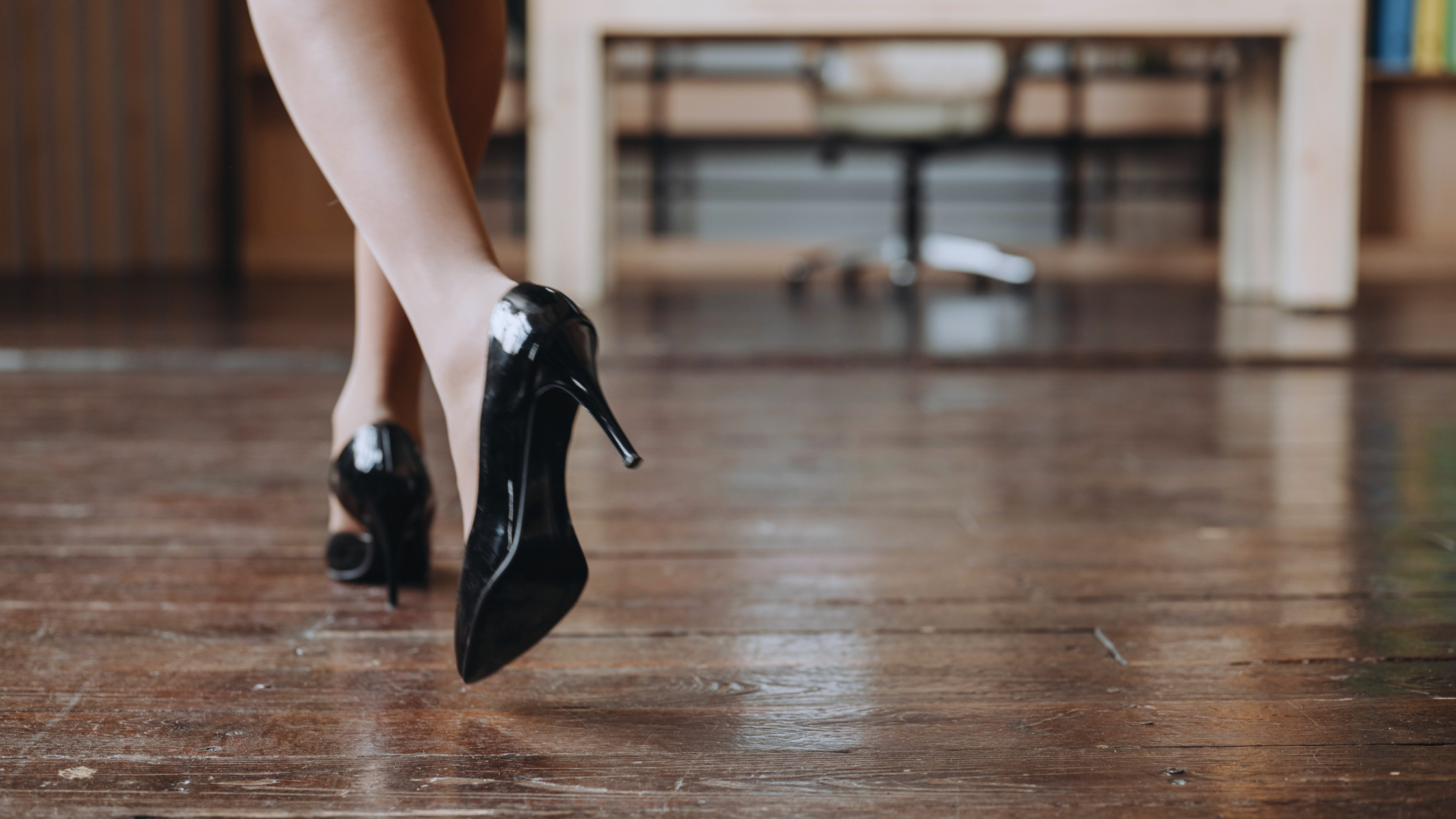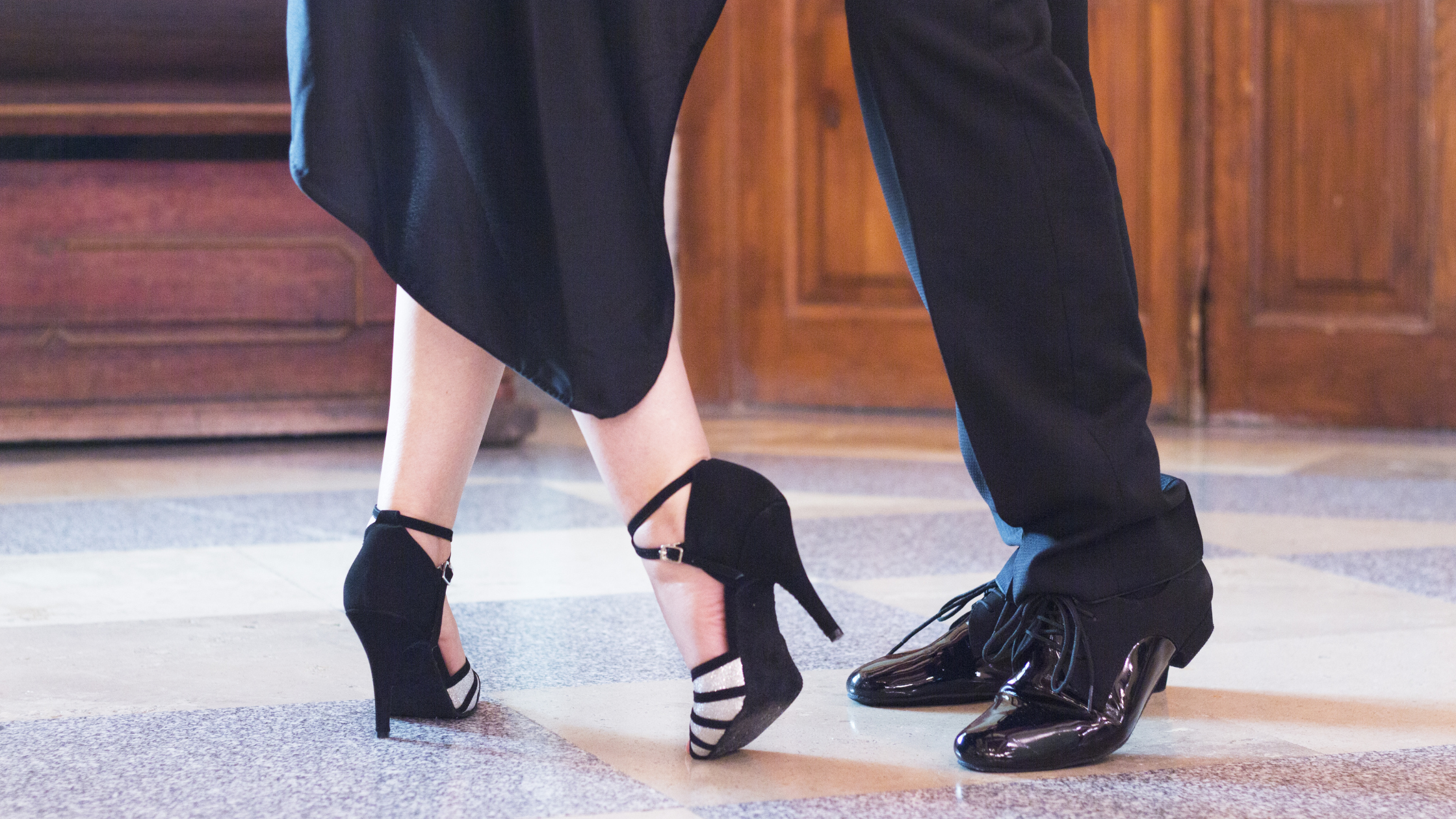Sweeping and Dragging: All You Need To Know About Barridas
In the sultry world of Argentine tango,
the dance of passion and connection, countless moves tantalize and captivate both dancers and spectators alike.
One such move is the barrida, a graceful sweeping action that adds a touch of drama and excitement to the dance.
Derived from the Spanish word “barrer,” meaning “to sweep,” the barrida is a technique that showcases the skill and finesse of the dancers.
Let’s delve into the intricacies of the barrida and its close relative, the arrastre.
Argentine Tango: Flirting Feet
Argentine tango is a passionate and intimate dance that originated in the late 19th century in the slums and lower-class neighborhoods of Buenos Aires, Argentina.
Tango is known for its improvisational nature, intricate footwork, and the deep connection between the dancers.
In “Argentine Tango and the Flirtatious Ocho,” Harold and Meredith Sears shared that
Juan Carlos Copes described the dance as “a man and woman in search of each other. It is the search for an embrace, a way to be together.”
How does the dance achieve this?
The Abrazo
At the heart of Argentine tango lies the embrace, known as the “abrazo.”
Unlike other partner dances,
the tango embraces are close and intimate, allowing the dancers to connect both physically and emotionally.
The abrazo can vary in intensity, ranging from a gentle and tender embrace to a more firm and passionate one. The connection between the dancers is established through the chest and upper body. In contrast, the lower body remains flexible and responsive, ready to execute intricate footwork and movements.
Head Positions
In Argentine tango,
the positioning of the head is essential to maintain a harmonious connection between the dancers.
There are three primary head positions: neutral, left side, and right side. The neutral position involves keeping the head aligned with the body’s central axis. The left side position tilts the head slightly to the left, while the right side position tilts it to the right. These head positions add elegance and fluidity to the dance, creating a visual dialogue between the partners.
Rising and Falling
A distinctive feature of Argentine tango is the concept of “rise and fall.” Unlike other dances, where the rise and fall typically occur vertically, in tango, it is more subtle and horizontal.
The rise and fall result from dancers’ leg actions and body movements, creating a dynamic and expressive quality in their steps.
As said by Harold and Meredith Sears:
“With each step we collect the free foot and brush the knees and ankles together as they pass in a smooth, slinky, level glide. One teacher asked us to develop the feel of a “great jungle cat.” We are stalking, seeking, exploring each other.”
Many Argentine tango steps showcase this “stalking, seeking, exploring” quality. You have the ocho, the gancho, the molinete, and more! Each one brings its own flavor and energy to the dance. Of course,
the barrida, a sweeping action of the foot, is another popular step that proves how the Argentine tango is a flirtation with the feet.
What Is a Barrida?
Now that we have established the foundation of Argentine tango, let’s explore the barrida in detail.
A barrida is a sweeping and dragging action executed by one dancer’s foot against their partner’s foot or leg.
As defined by Argentine Tango Lab in “TANGO TERMINOLOGY”:
“A sweep; a sweeping motion: One partner’s foot sweeps the other’s foot and places it without losing contact. Barridas are done from either the outside or the inside of the foot of the receiving party. The technique is different for the inside and outside barridas.”
The goal is to redirect the partner’s leg or foot to create a fluid and seamless movement.
The barrida can be performed by either the leader or the follower, adding an element of seduction and playfulness to the dance.
Barrida vs Arrastre
So, what’s the difference between barrida and arrastre? While both moves involve a dragging action, they differ in execution and intent. Argentine Tango South East defined arrastre in “Tango lexicon” as follows:
“Arrastre means ‘drag’.
Here the leader literally drags or pushes the foot of the follower’s free leg to another position, whilst her axis (body weight) remains in the same place.”
Therefore, in a barrida, the foot of one dancer sweeps and redirects their partner’s foot or leg in a controlled manner. On the other hand, an arrastre involves a more forceful and continuous dragging action, often resulting in a more dramatic and dynamic movement.
The barrida focuses on creating a connection and maintaining the flow of the dance.
In contrast, the arrastre aims to generate a sense of propulsion and excitement.
Executing the Barrida
To execute a barrida successfully, proper technique and communication between the dancers are crucial. Diego Blanco and Ana Padron in “How to Do the Drag aka El Arrastre & La Barrida in Tango” used this combination to quickly teach the technique:
side step + parada + back step + barrida + arrastre + sandwiche + cross over.
The leader can first lead the side step followed by a parada. As the follower takes a back step, the leader can shift their weight to their left leg and drag the follower’s right foot towards them. The leader can then perform an arrastre, followed by a sandwich and a cross-over before continuing with the dance.
The leader initiates the barrida by subtly indicating their intention and creating a clear pathway for the follower’s foot or leg to be swept. The follower must remain receptive and responsive to the leader’s signals, maintaining a relaxed and flexible leg.
As the leader’s foot or leg sweeps against the follower’s foot or leg, the follower transfers their weight smoothly and continues the movement in the desired direction. The barrida should flow naturally and seamlessly within the context of the dance, enhancing the connection between the dancers.
Combinations With the Barrida
You can incorporate the barrida into various tango combinations, adding flair and intrigue to the dance. Here are a few popular barrida combinations:
Ocho + Barrida
The leader initiates an ocho movement and incorporates a barrida to redirect the follower’s foot or leg.
Sacada + Barrida
In this combination, the leader performs a sacada, displacing the follower’s leg, and follows it with a barrida to create a continuous and flowing movement.
Giro + Barrida
The giro, or the tango turn, is combined with a barrida, resulting in an elegant and visually captivating sequence. The leader guides the follower through a turn while simultaneously executing the barrida.
These are just a few examples of the myriad possibilities for combining the barrida with other tango elements. The creativity and skill of the dancers can take these combinations to new heights!
Common Mistakes When Doing the Barrida
While the barrida can be a mesmerizing move when executed with precision, there are common mistakes that dancers should be aware of to ensure a smooth and enjoyable experience for both partners.
Stiff Knees
One of the most common mistakes is having stiff knees during the barrida.
Stiff knees hinder the flow of the sweeping action and can make the movement feel forced or awkward.
Maintaining soft and relaxed knees is essential, allowing for a smooth weight transfer and a seamless barrida.
Knees Facing Each Other
Another mistake to avoid is having the knees facing each other during the barrida. This misalignment can create tension and restrict the natural movement of the legs. Instead,
the knees should be slightly turned out, allowing for a more fluid and graceful barrida.
Heavy Feet
A barrida requires a sense of lightness and responsiveness in the feet, especially from the followers.
Heavy feet can impede the sweeping action and make maintaining a connection between the dancers challenging.
Keeping the feet engaged and responsive is essential, allowing for a delicate and controlled barrida.
Tips for a Beautiful Barrida
To achieve a beautiful barrida, both the leader and the follower must be mindful of their technique and communication. Here are some tips to enhance your barrida skills:
Leader: Soften Your Knees
As the leader, maintain soft and relaxed knees throughout the barrida. This tip will enable you to guide your follower with grace, allowing for a harmonious movement.
Follower: Open and Rotate Your Foot
As the follower, pay attention to your foot placement during the barrida. Open and rotate your foot slightly to allow for the leader’s seamless sweep and redirection.
Maintain flexibility and responsiveness in your leg to execute the barrida with grace.
“Tip number two is to lower the position, open rotate your foot for the followers. When he’s pushing, I will rotate in, so I try to have my heels and knees together… Then, I follow him and open again at the end of my barrida.”
Leader: Send Her Leg to Her Back
To create an elegant and visually striking barrida,
the leader should aim to sweep the follower’s leg towards her back rather than outward.
This subtle adjustment adds depth and dimension to the movement, enhancing the overall aesthetic of the barrida.
Leader: Be Mindful of Her Lines
During the barrida, the leader should be mindful of the follower’s lines and body positioning. As said by Leonardo Barrionuevo, together with Miriam Larici, the leader is in charge of making the follower look pretty.
Avoid disrupting your follower’s balance or causing her to contort awkwardly.
Maintain a clear and comfortable pathway for the barrida.
It can help to practice your barrida technique in front of a mirror or with the help of an instructor. This way, you can see the effect of your movement and be mindful of proper body alignment.
When the follower looks and feels beautiful, you’re executing the barrida perfectly!
Should You Learn the Barrida?
When you’re trying the barrida for the first time, you and your partner might find it difficult to master right away.
The barrida can look simple and effortless, but the key to executing it with style and finesse lies in the leader’s ability to provide a steady lead and the follower’s willingness to trust her partner.
When your first barrida and arrastre look and feel clumsy, it can make you think it’s not worth the effort.
Whether a beginner or an experienced dancer, learning the barrida can enrich your tango repertoire and elevate your dancing skills. It allows for a deeper connection with your partner and provides an opportunity to explore the subtle nuances of footwork and communication within the dance.
Learning the barrida is like learning the very essence of the Argentine tango. As we said above, the Argentine tango is a flirtation with the feet, and the barrida is a part of that language.
The barrida gives that sultry, light-footed feeling to the dance, leading you and your partner in and out of turns, embellishments, and other creative elements.
Without it, the tango would be like a conversation without any pauses.
Allow yourselves to experiment, make mistakes, and have fun with your barrida. It’s all part of the learning process! Learn from the experts and your own mistakes and successes. Trust that your confidence and creativity will improve with each attempt.
The most important thing to remember is that the barrida should always look natural and effortless. It should never be forced or strained but instead come from the heart and soul of your connection with your partner. In time, your barrida will give you that “stalking, seeking, exploring each other” feeling that makes the Argentine tango so unique.
Sweep Her Off Her Feet
The Argentine tango is an enchanting dance, and the barrida can literally and metaphorically sweep your partner off her feet. With the sweeping action, followed by the dragging, the barrida adds a touch of drama and flirtation to the dance.
Mastering the barrida requires practice, technique, and a deep understanding of the connection between partners.
So, embrace the art of sweeping and dragging, and let the magic of the barrida help you and your partner search for each other on the dance floor!









